How Tall Are Setters In Volleyball?
As offensive playmakers, setters aren’t usually considered the tallest players on the volleyball court.
However, there are numerous misconceptions surrounding the ideal height for setters.
How Tall Are Setters In Volleyball? The average height of an Olympic men’s volleyball setter is approximately 192cm or 6’3.5″. The average height for Olympic women’s setters is around 177cm or 5’10”.
So, how crucial is the height for a setter?
Let’s delve into the significance of height at various levels of the game and explore strategies for setters who may not possess the typical height.
What’s The Average Height Of A Setter?
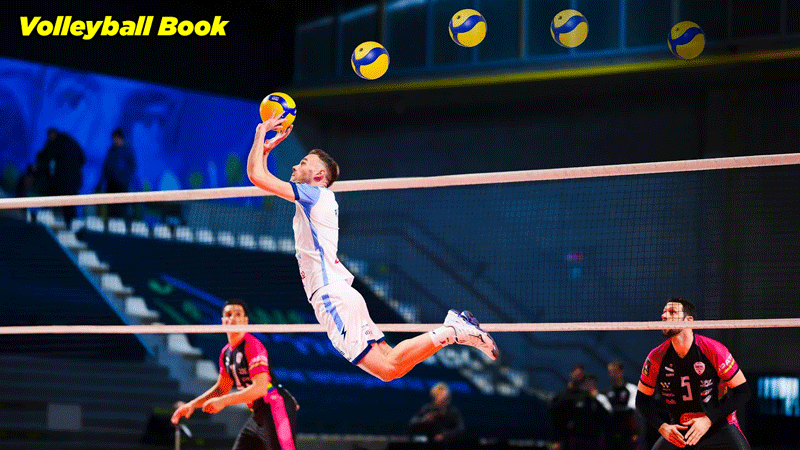
Of course, the significance of height for setters varies depending on the level of play.
What’s perhaps more intriguing than the raw statistics is how these measurements compare to those of other positions on the court.
Indeed, some of these comparisons yield surprising insights!
Average Height Of A Setter Vs Other Positions
Most people rightfully assume that setters are the second shortest position on the court. However, what many tend to overlook is that setters are typically only slightly shorter than outside hitters.
During the 2012 Olympics, fascinating data was published regarding height based on position.
| Team/ Function | RUS | BRA | ITA | BUL | Average height per player function |
|---|---|---|---|---|---|
| Libero’s | 188 | 184 | 183 185 | 185 | 185 |
| Setters | 195 | 190 191 | 200 194 | 202 196 | 195 |
| Receiver- atteckers | 205 196 202 197 | 190 192 194 201 | 196 195 202 | 191 200 | 197 |
| Opposites | 202 218 | 198 212 | 202 | 200 206 | 205 |
| Middle blockers | 203 210 218 | 203 209 | 202 204 | 204 206 208 | 206 |
| Average of Country | 203 | 197 | 196 | 200 | |
This data reveals that, on average, setters were only 2cm (0.8″) shorter than outside hitters, yet still 10cm taller than liberos.
So, for those who thought setters could be similar in height to liberos, they’re actually much closer in height to hitters!
Average Setter Height In The Olympics
At the highest echelon of the game, setters are gradually increasing in height each year.
Based on height data from the 2012 and 2020 Olympics, the average height of an Olympic men’s volleyball setter is 192cm or 6’3.5″, while for women, it’s 177cm or 5’10”.
Interestingly, when examining the top 4 teams from 2012, the average men’s setter height was 195cm. However, in the recent 2020 Olympics, it decreased to 189cm.
Conversely, for women’s volleyball, the average height of setters in the top 4 teams during the 2012 Olympics was only 173cm. Yet, in the 2021 Nations League, the average height was almost 181cm.
This suggests a significant increase in height for women’s setters and a decrease in height for men’s setters over time.
Though these datasets are relatively small, it’s reasonable to assume that volleyball setter height is indeed on the rise.
Average Setter Height In College Volleyball
Below, we have the average height for men’s college volleyball setters, according to data from the NCSA website.
Men’s College Setter Height Ranges
| Division | D1/D2 | D2/D3 | D3/NAIA | NAIA/CCCAA |
|---|---|---|---|---|
| Height | 6’1″ – 6’5″ (185.5cm – 196cm) | 6′ – 6’4″ (183cm – 193cm) | 6′ – 6’3″ (183cm – 190.5cm) | 6′ – 6’5″ (183cm – 196cm) |
Below, we have the average height for women’s college volleyball players.
Women’s College Setter Average Heights
| Division | D1 | D2 | D3 | NAIA |
|---|---|---|---|---|
| Height | 5’10” (178cm) | 5’8″ (173cm) | 5’7″ (170cm) | 5’7″ (170cm) |
How Tall Is The Average D1 Setter?
According to the NCSA website, the average height of a women’s D1 volleyball setter is 5’10” (178cm), while for men, the average D1 volleyball setter height ranges between 6’1″ – 6’5″ (185.5cm – 196cm).
Does A Volleyball Setter Need To Be Tall?
Exactly how tall a setter needs to be is a tricky question, and the best answer I can provide is… yes and no.
Height Is Extremely Underrated For A Setter
I cannot stress enough how much easier your life as a setter will be if you’re tall.
Setters Need To Block the Well
During a rally, your first responsibility as a setter often involves blocking. Setters frequently find themselves up against the other team’s outside hitter, who is typically a highly skilled spiker.
Being able to effectively block the opposition’s best hitter is a massive asset. However, if you’re on the shorter side, on average, you’ll have a lower block reach as well.
A lower block reach enables your opponent to more easily tool balls off your hands and, in some instances, even hit completely over the top of your block.
Tall Setters Are More Competitive Around The Net
In addition to serving as a defensive asset, being a tall setter allows you to save more passes that are too tight to the net by jump setting.
Moreover, you’ll be more competitive in every jousting situation.
Furthermore, your setter dump becomes more challenging to defend when you’re taller.
Tall Setters Improve Their Team’s Hitting Efficiency
When you’re in the front court as a tall setter, middle blockers will face a much tougher challenge, compelling them to consider committing blocking against you.
This prolonged engagement with the middle blocker keeps them anchored in the center of the court for a longer duration, consequently resulting in a higher hitting percentage for your team’s wing attackers.
While Height Is Hugely Beneficial, Being Short Isn’t A Deal-Breaker
In the role of setter, what you lack in height can often be compensated for in other areas.
For instance, if you’re 6cm shorter than the average setter but have a 6cm higher-than-average block jump, then you’re suddenly not at much of a disadvantage.
By concentrating on the aspects within your control, you can still make yourself valuable enough to be an asset on the court.
- Become the most accurate and consistent setter that hitters love to play with by honing your skills and mastering the intricacies of setting.
- Transform your jump serve into a formidable weapon through dedicated practice and refinement.
- Work on developing exceptional court awareness and volleyball IQ to anticipate plays and make split-second decisions effectively.
- Enhance your communication and leadership skills to effectively guide and motivate your team on the court.
How Tall Do I Need To Be To Play Setter?
In the next section, we’ll discuss a few exceptional cases of very short setters. However, it’s important to understand that these athletes are exceptions to the rule.
While hitting specific height benchmarks isn’t a necessity for success as a setter, things can become significantly more challenging if you fall short.
For aspiring men’s setters, aiming to reach at least 6’1″ or 185cm is advisable.
This puts you around 7cm shorter than most high-level setters. Nevertheless, with exceptional talent and dedicated effort, you can still excel.
If you’re shorter than 6′, unless you possess an extraordinary vertical jump, it might be wise to consider pursuing a career as a libero.
As for women, realistically, aiming for 5’8″ (178cm) or taller is recommended.
Below, we have the scouting benchmarks for women’s college volleyball scholarships.
| NCAA DI | NCAA DII | NCAA DIII | NAIA | |
|---|---|---|---|---|
| Libero’s/ Defensive Specialist | 5’5”+ | 5’3”+ | 5’2”+ | 5’2”+ |
| Middle Hitter | 6’1”+ | 5’10”+ | 5’10”+ | 5’9”+ |
| Outside Hitter/ Right Side | 6’+ | 5’11”+ | 5’9”+ | 5’8”+ |
| Setter | 5’10”+ | 5’9”+ | 5’6”+ | 5’4”+ |
The Shortest Professional Volleyball Setters
If those height benchmarks left you feeling disheartened, here’s some good news: there is hope!
Let’s take a look at a few exceptions who defied the height norms and achieved remarkable success as volleyball setters, despite being considered too short on paper.
1. Matías Sánchez (173cm)
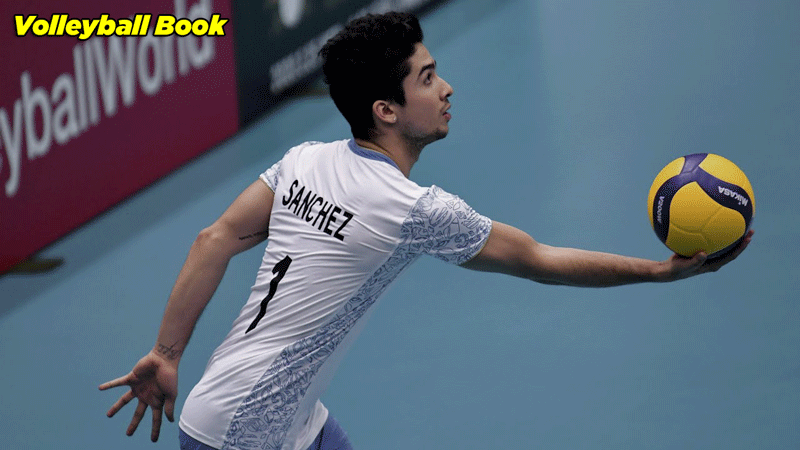
Matías Sánchez, a member of the Argentinian national team and a professional player in France, stands at just 173cm tall.
That’s a staggering 20cm shorter than most of the setters he competes against.
Moreover, he’s not known for his exceptional jumping ability. However, Sánchez distinguishes himself through his incredible accuracy, consistency, and intelligent play on the court.
2. Masahiro Sekita (175cm)
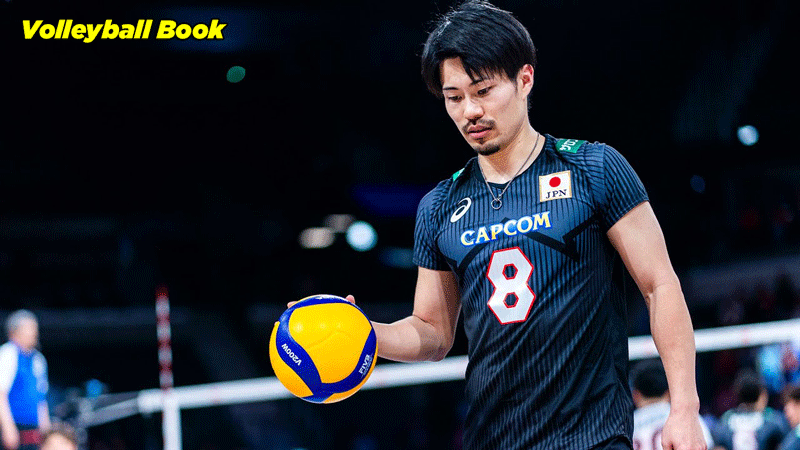
Marashiro Sekita, a member of Japan’s national team, defies expectations as an extremely undersized setter. Despite his stature, he more than compensates with pure talent and skill.
Currently playing on a professional contract in Poland, Sekita exemplifies that height isn’t everything in this position.
Similar to Sánchez, he isn’t known for his exceptional jumping ability, boasting just a 311cm spike reach.
Sekita’s gameplay is not only captivating to watch but also serves as an inspiration to younger, shorter setters worldwide.
3. Yoshie Takeshita (159cm)
At a mere 159cm in height, Yoshie Takeshita defied expectations as a highly successful setter for the Japanese national team.
Although she has since retired, Takeshita’s legacy endures as she remains ranked among the top 100 women’s volleyball players in the world.
Throughout her career, she amassed over 20 awards, a testament to her exceptional skill and determination.
How To Succeed As A Short Setter
Finding success as an undersized setter hinges on concentrating on becoming exceptionally proficient at the things within your control.
While you may not excel as a blocker due to your height, there’s no reason you can’t become a smarter and more precise playmaker.
Here are a few areas to prioritize if you’re a vertically challenged setter:
1. Perfect Technique & Accuracy
Compared to taller setters, as a shorter setter, you’ll need to dedicate more effort to ensure you’re technically superior.
While taller setters can showcase their blocking prowess as a presence at the net, shorter setters must impress with flawless sets.
Unfortunately, there are no shortcuts to achieving this. You’ll simply have to invest more time and effort.
Develop Accuracy With A Target Net
It can indeed be challenging to get enough quality repetitions in when you’re practicing alone.
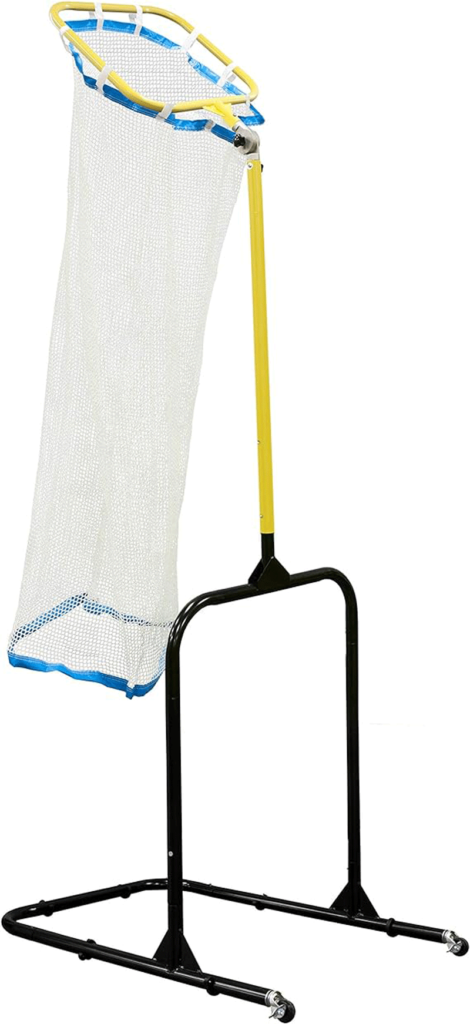
That’s why I highly recommend serious setters to consider investing in a volleyball setter target net.
Using a net is an excellent method to gauge the accuracy of your sets, especially when you don’t have the luxury of a team to train with.
These nets are versatile because you don’t need a volleyball court or net setup to use them. They can be easily set up anywhere outdoors at home, providing a reliable means of developing accuracy.
If your competitors are setting the ball 300 times a week, aim to surpass that by going to training early and staying late to ensure you’re setting significantly more than 300 times a week.
Focus on improving your weaknesses as a setter. For instance, if you struggle with setting to middle blockers, dedicate time to work on those quick sets.
If delivering high balls to your right side’s hitting window during broken plays is a challenge, focus on drilling these tough back sets diligently.
Practice Using A Weighted Training Ball
Maybe you find that you lack the hand and wrist strength necessary to consistently direct the ball where it needs to go.
If that’s the case, consider incorporating a weighted training ball into your practice routine to develop hand and finger strength.
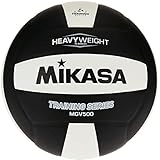
Continue performing your usual drills, but allocate some time each week to practice with a weighted training ball. Over time, you’ll likely find that setting a regular volleyball becomes easier and smoother as your strength improves.
2. Increase Your Vertical Jump
One of the most effective ways to compensate for not being exceptionally tall is to develop an impressive vertical jump.
While outside hitters or opposites are often associated with high-flying plays, there’s absolutely no reason why you, as a setter, can’t achieve the same level of elevation.
By increasing your vertical jump, you’ll not only enhance your blocking abilities but also excel in winning more jousts, executing more dumps, and saving more overpasses.
Moreover, you’ll become more explosive overall, enabling you to move faster on the court and retrieve more errant passes.
To assist you in this endeavor, I’ve compiled a list of the best strength exercises tailored for setters. Make sure to incorporate these into your weight room routine!
Becoming stronger and jumping higher will also significantly improve your serving skills, which leads me to my next point…
3. Make Sure Your Serve Is An Asset
If you’re a setter who lacks height, increasing your value as an asset to the team becomes crucial for securing a spot on teams.
While you may struggle as a blocker, being a consistently reliable server can offset this weakness.
To achieve this, dedicate more time to practicing serving and hone this skill through consistent repetition.
Arrive at practice early, stay late, and aim to complete an additional 50-100 serves per week.
Over time, these extra repetitions will accumulate, potentially transforming you into a player akin to Yuji Nishida in terms of serving prowess.
4. Communicate Well & Develop Volleyball IQ
Above all else, exceptional setters possess a high level of intelligence on the court.
They excel at reading the flow of the game and possess the ability to craft strategic offenses by exploiting their opponents’ weaknesses in each rotation.
While much of this intelligence may come naturally, it’s challenging to determine the extent to which it can be trained. However, one of the most effective ways to develop this skill is by simply playing a lot of volleyball.
If you feel that you lack this innate talent, consider spending more time analyzing game footage during your downtime.
There’s a wealth of high-quality game footage available for free on platforms like YouTube. Dedicate some time each day to watching matches and putting yourself in the shoes of the setter.
Vividly imagine the options you would consider running in each situation and attempt to predict how the setter responds in each rally.
This analytical approach can greatly enhance your understanding of the game and improve your strategic thinking as a setter.
Parting Thoughts: How Tall Are Setters In Volleyball?
The importance of height for a setter cannot be overstated.
If you’ve chosen this position, I hope you’ve met the height benchmarks we’ve discussed throughout this article. If not, succeeding at the highest level may indeed present a significant challenge.
However, if there’s one takeaway from this post, it’s this: almost any height disadvantage can be overcome through hard work and dedication.
Wishing you the best of luck.
Also Read: Volleyball Setter Plays [Guide 2024]
